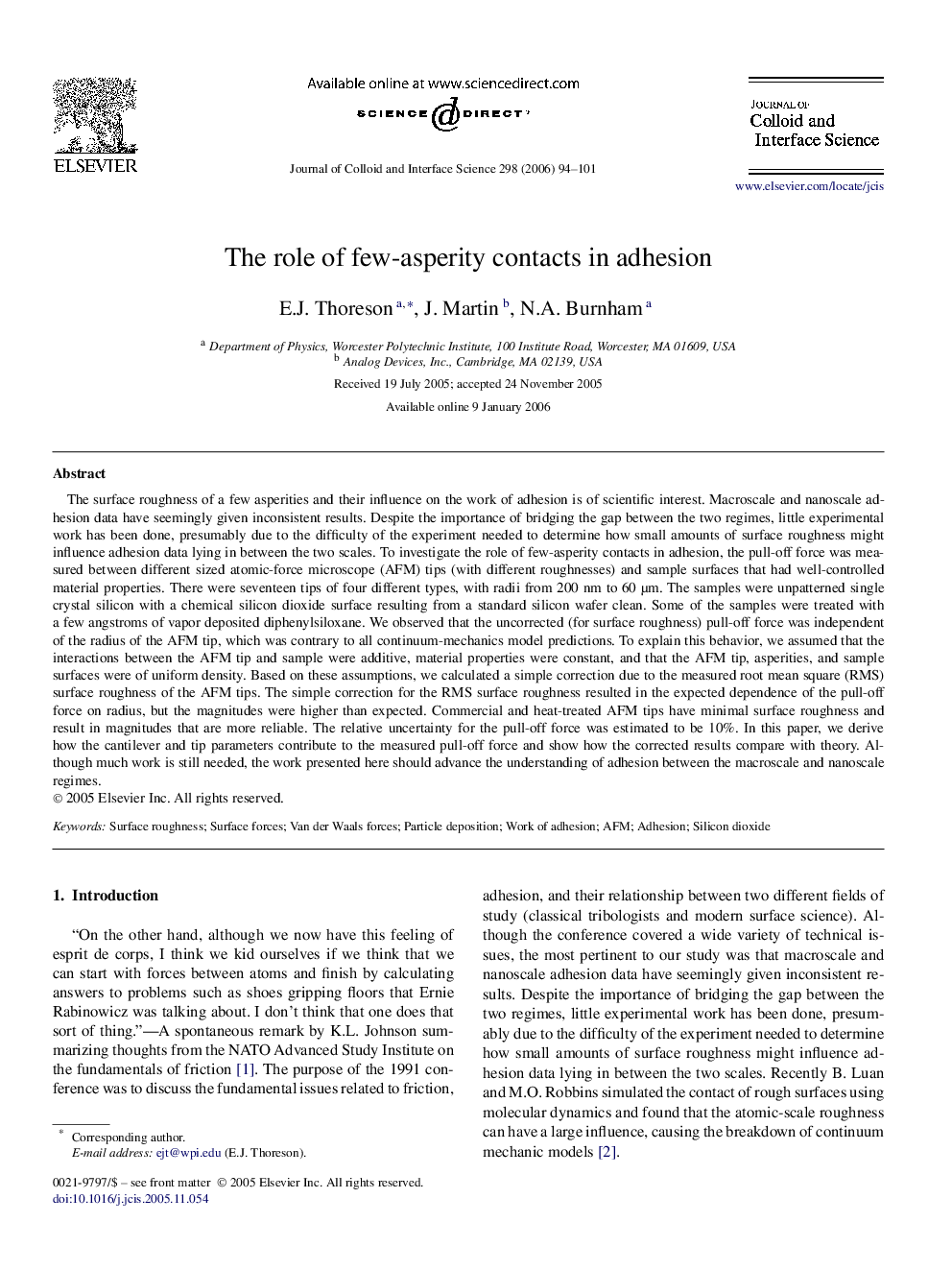| کد مقاله | کد نشریه | سال انتشار | مقاله انگلیسی | نسخه تمام متن |
|---|---|---|---|---|
| 613612 | 880725 | 2006 | 8 صفحه PDF | دانلود رایگان |

The surface roughness of a few asperities and their influence on the work of adhesion is of scientific interest. Macroscale and nanoscale adhesion data have seemingly given inconsistent results. Despite the importance of bridging the gap between the two regimes, little experimental work has been done, presumably due to the difficulty of the experiment needed to determine how small amounts of surface roughness might influence adhesion data lying in between the two scales. To investigate the role of few-asperity contacts in adhesion, the pull-off force was measured between different sized atomic-force microscope (AFM) tips (with different roughnesses) and sample surfaces that had well-controlled material properties. There were seventeen tips of four different types, with radii from 200 nm to 60 μm. The samples were unpatterned single crystal silicon with a chemical silicon dioxide surface resulting from a standard silicon wafer clean. Some of the samples were treated with a few angstroms of vapor deposited diphenylsiloxane. We observed that the uncorrected (for surface roughness) pull-off force was independent of the radius of the AFM tip, which was contrary to all continuum-mechanics model predictions. To explain this behavior, we assumed that the interactions between the AFM tip and sample were additive, material properties were constant, and that the AFM tip, asperities, and sample surfaces were of uniform density. Based on these assumptions, we calculated a simple correction due to the measured root mean square (RMS) surface roughness of the AFM tips. The simple correction for the RMS surface roughness resulted in the expected dependence of the pull-off force on radius, but the magnitudes were higher than expected. Commercial and heat-treated AFM tips have minimal surface roughness and result in magnitudes that are more reliable. The relative uncertainty for the pull-off force was estimated to be 10%. In this paper, we derive how the cantilever and tip parameters contribute to the measured pull-off force and show how the corrected results compare with theory. Although much work is still needed, the work presented here should advance the understanding of adhesion between the macroscale and nanoscale regimes.
Pull-off force between silicon die and AFM tips. (Left) The pull-off force corrected for the angle of repose. (Right) Pull-off force corrected for both angle of repose and surface roughness.Figure optionsDownload high-quality image (172 K)Download as PowerPoint slide
Journal: Journal of Colloid and Interface Science - Volume 298, Issue 1, 1 June 2006, Pages 94–101